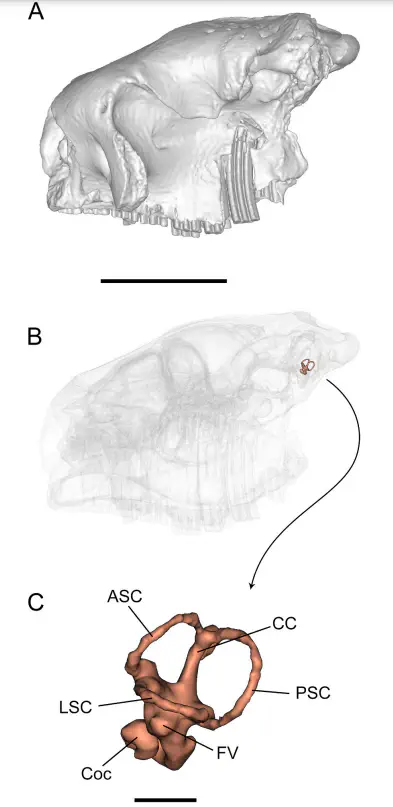The inner ear anatomy of glyptodonts and pampatheres (Xenarthra, Cingulata): Functional and phylogenetic implications

Abstract
In recent years, the increase in studies on the inner ear anatomy of xenarthrans provided new insights regarding some locomotor and phylogenetic aspects. These works have begun to include fossil specimens, although so far, only two extinct representatives of the suborder Folivora (ground sloths) have been analyzed. In the present study, we present the first reconstruction and description of the bony labyrinth of five extinct specimens of the suborder Cingulata, the glyptodonts Glyptodon, Doedicurus, Panochthus, and Pseudoplohophorus, as well as the pampathere Holmesina, in order to analyze their morphology and evaluate functional and phylogenetic aspects. The anatomical and morphometric comparison shows that the inner ear of glyptodonts is largely similar to that of modern armadillos, particularly sharing many characteristics with Chlamyphorus. While the inner ear of Holmesina is similar to that of glyptodonts, it presents some characteristics that make it more similar to extant armadillos. Regarding some functional aspects inferred from the anatomy of the semicircular canals, glyptodonts would have had low levels of agility, although similar to most extant armadillos, and low head angular velocity. On the other hand, Holmesina would have had an agility level similar to that of the giant armadillo Priodontes, although it would also present low head angular velocity as seen in most extant armadillos. Finally, preliminary parsimony and Bayesian phylogenetic inference analyses based on a reduced set of inner ear characters showed interesting results, with glyptodonts and Holmesina recovered as closely related to Chlamyphorus. These results closely resemble the recent topologies obtained using ancient DNA and markedly contrast with the topologies obtained using more traditional morphological characters, highlighting the importance of inner ear data for the inference of phylogenetic relationships in cases where DNA preservation in fossil taxa is unaccessible.